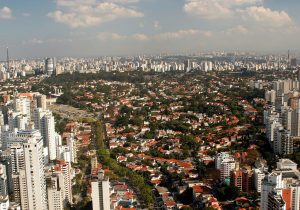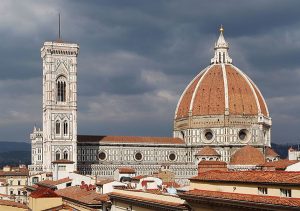CAA News Today
Two Sessions at February’s CAA Conference Introduced Topics for the Next International Congress for the History of Art (CIHA)
posted Mar 29, 2018
Paul B. Jaskot, professor of art, art history, and visual studies at Duke University, contributed the following article about upcoming opportunities for CAA members to participate in international art history conferences. Professor Jaskot is a member of the National Committee for the History of Art (NCHA) and a past president of CAA (2008-10).
At the 2018 CAA Annual Conference in Los Angeles, two exciting sessions addressed the theme of international “mobilities” in art history, presenting new research related to Brazil and Italy (and their artistic diasporas). Organized by members of the National Committee for the History of Art (NCHA), each session took up the general topic of mobilities, which will be the organizing concept for the upcoming International Congress for the History of Art. The congress is sponsored by the International Committee of the History of Art (CIHA), of which NCHA is the US affiliate. NCHA acts as representative body to connect the international committee’s work with CAA and its members to sustain the global exchange of art historical work.
In an unusual format, CIHA has approved two official conferences—together comprising the International Congress—developing this theme in order to emphasize the nature of movement and art over time and space. The 2019 meeting will take place in Florence, Italy, and the 2020 meeting will convene in São Paulo, Brazil.

São Paulo, Brazil. Photo: Ana Paula Hirama/Flickr, via Wikimedia Commons
In the same spirit, NCHA decided to sponsor two sessions at the CAA Annual Conference to raise awareness of the upcoming conferences as well as begin to develop US participation. The first session, chaired by Jeanette Favrot Peterson, was entitled “Mobilities: Brazil and Beyond” while the second session, chaired by Elizabeth Cropper focused on “Mobilities: Italy and the New World.” The Brazil session featured Brazilian speakers (including representatives to CIHA) on topics that particularly interpreted mobility as migration in/through Brazil, from the ancient world through contemporary art history and across diverse media. In a complementary but distinct emphasis, the Italian session centered on spatial representations and movements of objects and individuals between Italy and the Americas; like its counterpart, the session had an expansive chronological focus and range of media, from maps to Modernist architecture. In both cases, the sessions emphasized the importance of scholarly exchange between US art historians and the international community, a crucial goal of CIHA, NCHA, and indeed CAA itself, especially through the work of its International Committee and the CAA-Getty International Program.

Florence, Italy. Photo: Felix König, via Wikimedia Commons
Art historians interested in these exchanges can get involved now with the ongoing dialogue. The Call for Chairs for the Florence CIHA 2019 conference has been posted and is open to all (Deadline: April 15, 2018); the Italian Committee has chosen the theme of “Motion: Transformation” as its interpretation of the broader focus on mobilities. The chair selection will be followed by a Call for Papers in Fall 2018. The Brazilian Committee will first issue a Call for Sessions between October and December 2018; the Call for Chairs will be issued in February 2019; the Call for Papers will take place between May and August 2019 with the final program being posted in October 2019. NCHA is developing programming for the CAA 2019 Annual Conference to advertise these conferences and encourage US participation. Stay connected with NCHA and check out the CIHA website for further information! We will continue to post updates in CAA News as well.
CIHA is the oldest continuously held art history conference in the world. In addition to its congresses held every four years, it also sponsors colloquia: more focused gatherings around particular art historical themes that are sponsored by its national committees. On November 27-30, 2018, India will be holding its first colloquium on the topic of “Art, Design, and Society.” Note that the Call for Papers closes May 7, 2018, so there is still time to participate in this conference. Following this, Japan will be organizing another colloquium in 2019 titled “Towards the Future: Museums and Art History in East Asia.” More information will be available as details are finalized. As the colloquia and the congress indicate, there are many opportunities for US art historians to get involved with these international exchanges of ideas.


